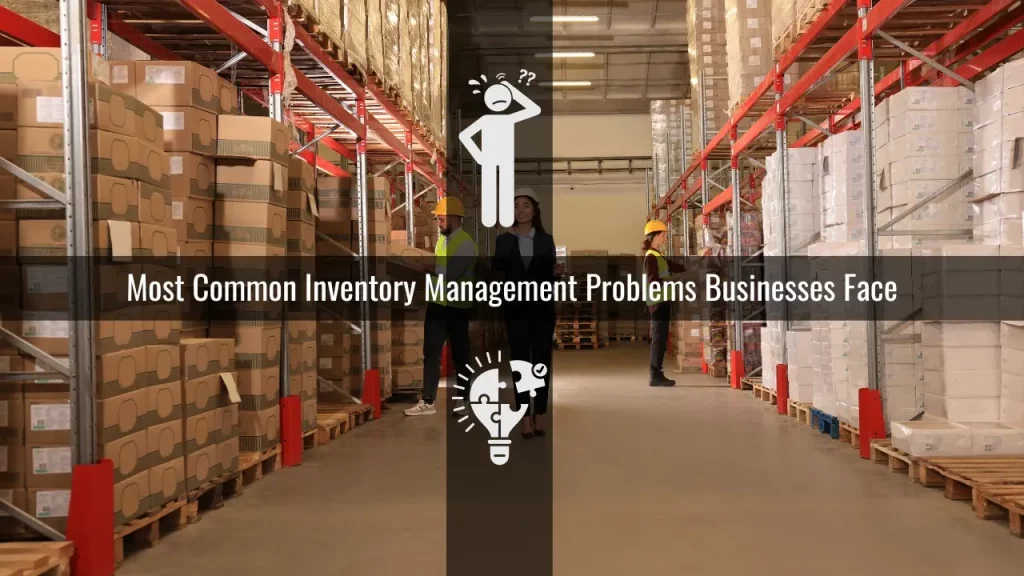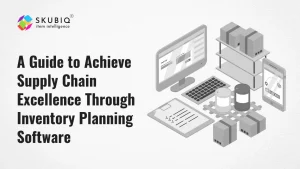Eficaz gestão de inventário é a base do sucesso para empresas em vários setores. A capacidade de controlar perfeitamente o fluxo de mercadorias dos fabricantes para os clientes é vital para manter uma vantagem competitiva. No entanto, as empresas muitas vezes enfrentam uma infinidade de inventory management problems that can impact efficiency, profitability, and customer satisfaction. In this article, we will delve into the most prevalent challenges businesses encounter in managing their inventories and explore potential solutions.
1. Roturas e excesso de stocks: Alcançando o equilíbrio certo
Um dos desafios perenes gestão de inventário é encontrar o delicado equilíbrio entre atender à demanda do cliente e evitar rupturas ou excesso de estoque. Uma ruptura de estoque ocorre quando uma empresa fica sem um determinado produto, levando à perda de vendas e clientes insatisfeitos. Por outro lado, o excesso de estoque compromete capital valioso e espaço de armazenamento.
Solução: Implementando um robusto sistema de gerenciamento de estoque é crucial. Esses sistemas aproveitam dados históricos, tendências atuais do mercado e outros fatores para prever a demanda com precisão. Os pontos de reabastecimento automatizados ajudam as empresas a reabastecer os itens em tempo hábil, evitando rupturas e excesso de estoque.
2. Gestão inadequada de armazéns: organização para eficiência
Eficiente gerenciamento de armazenagem é essencial para um gerenciamento de estoque eficaz. A má organização dentro de um armazém pode resultar em erros, atrasos e aumento dos custos de transporte.
Solução: As empresas devem investir em tecnologias modernas sistemas de gerenciamento de armazém que agilizam processos e melhoram a eficiência geral. Rastreamento em tempo real, sistemas de separação automatizadose a integração com outros processos de negócios pode melhorar significativamente gerenciamento de armazenagem.
3. Lack of Real-Time Visibility: The Need for Timely Information
Real-time visibility into inventory is paramount for making informed decisions. Manual tracking methods and delayed updates can lead to inaccuracies and mismanagement.
Solução: Implementing an integrated inventory management system that provides real-time visibility is essential. This ensures businesses can monitor stock levels, track shipments, and make adjustments promptly based on the most current data.
4. Previsão de demanda imprecisa: antecipando as necessidades do cliente
A previsão precisa da demanda é fundamental para evitar rupturas e excesso de estoque. No entanto, muitas empresas lutam para prever com precisão a demanda dos clientes, levando a níveis de estoque abaixo do ideal.
Solução: A utilização de análises avançadas e algoritmos de aprendizado de máquina pode aumentar a precisão da previsão de demanda. Ao analisar dados históricos, tendências de mercado e fatores externos, as empresas podem fazer previsões mais confiáveis. A atualização regular dos modelos de previsão com base nas mudanças nas condições do mercado também é essencial.
5. Processos Manuais e Erros Humanos: Minimizando Erros
Depender de processos manuais aumenta o risco de erros humanos. Erros simples, como erros de entrada de dados ou falhas de comunicação, podem ter consequências significativas.
Solução: A automação é a chave para reduzir erros humanos. Implementando tecnologias como sistemas de leitura de código de barras e RFID, juntamente com processos automatizados de entrada de dados, minimiza intervenções manuais e aumenta a precisão em gestão de inventário.
6. Relacionamentos ruins com fornecedores: a importância da colaboração
Relacionamentos fortes com fornecedores são fundamentais para manter uma eficiência cadeia de mantimentos. Questões como entregas atrasadas ou fornecedores não confiáveis podem atrapalhar o fluxo de mercadorias.
Solução: Estabelecer e cultivar relacionamentos sólidos com fornecedores confiáveis é crucial. A comunicação regular, expectativas claras e monitoramento do desempenho do fornecedor podem ajudar a mitigar possíveis problemas. A diversificação da base de fornecedores também proporciona uma proteção contra interrupções.
7. Fatores Externos Imprevisíveis: Planejamento para Contingências
Fatores externos, como desastres naturais ou mudanças repentinas nas condições de mercado, podem impactar o cadeia de mantimentos inesperadamente. As empresas muitas vezes consideram difícil adaptar-se a estas circunstâncias imprevisíveis.
Solução: Embora seja impossível controlar fatores externos, é essencial ter planos de contingência em vigor. Manter estoques de segurança, diversificar fornecedores e ter opções alternativas de transporte são estratégias que podem ajudar as empresas a responder de forma mais eficaz.
8. Altos custos de manutenção: gerenciamento de despesas
Custos de transporte, incluindo armazenamento, seguro e obsolescência, podem impactar significativamente a lucratividade de uma empresa. Altos custos de manutenção podem resultar de excesso de estoque, estoque lento ou ineficiência. gerenciamento de armazenagem.
Solução: Regularly reviewing and optimizing inventory levels, improving warehouse efficiency, and identifying and liquidating obsolete stock can help reduce carrying costs.
Implementing just-in-time gestão de inventário strategies can also minimize the need for excessive storage.
Conclusion: Overcoming Challenges for Effective Inventory Management
While gestão de inventário poses several challenges, addressing these common inventory management problems is crucial for long-term success. Leveraging technology, fostering strong supplier relationships, and staying agile in response to external factors are key strategies to overcome these challenges. By focusing on solutions and continuously optimizing processes, businesses can achieve efficient and effective gestão de inventário, meeting customer demand while maximizing profitability.




